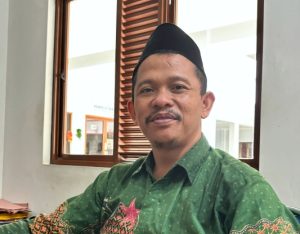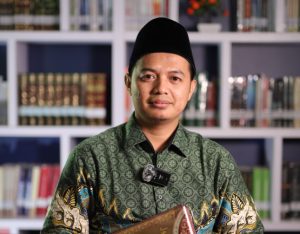 Every country in the world has its own uniqueness in fostering and maintaining religious harmony, including Indonesia. The uniqueness mainly due to several of factors such as history, political, social, cultural / ethnic, geographic, demographic, educational, economic and religious diversity factors itself. Indonesia, a country with more than 1,128 ethnic groups spread across its 17,508 archipelagos making Indonesia the largest archipelago state in the world.
Every country in the world has its own uniqueness in fostering and maintaining religious harmony, including Indonesia. The uniqueness mainly due to several of factors such as history, political, social, cultural / ethnic, geographic, demographic, educational, economic and religious diversity factors itself. Indonesia, a country with more than 1,128 ethnic groups spread across its 17,508 archipelagos making Indonesia the largest archipelago state in the world.
There have been various religions and beliefs practices in Indonesia both native religion as well as new religion brought by immigrant from West and East. Mainly these religions brought through trade, imperialism and missionaries, since then the number of their adherence has become increase and become part of society. Until today the Indonesian government officially recognized six major religions as legal religion in Indonesia to minimize the potential horizontal conflict which may cause on the basis of religion.
However, it is unfortunate that since 2004 the number of violation of freedom of religion or belief has constantly increased due to numerous discriminatory regulations that justify intolerance. The institute for Policy Research and Advocacy (ELSAM), from January to April 2013, assessed that the province of the West Java and found it to be the most intolerant province in Indonesia, this stem from Joint Decree No. 3/2008/Kep-033/A/JA/6/2008 issued by the Religious Affairs Minister, the Attorney General’s Office and the Interior Minister. This decree is often used as the basis of violence of the right of religious minorities in Indonesia.
Meanwhile, there has been several effort from various institutions, be it non-governmental institutions or governmental institution, to minimize the potential religious conflict, but these effort commonly normative approach which could not-if i may say- few has been give direct impact at the grassroots level society. Academic or scholarly round table talks or inter-religious dialogue has not been able to formulate definite strategic blue-print on how religious harmony could reach and acceptable by the common people.
In general, a country with multicultural society, a threat of horizontal conflict is always there, and it could escalating into large conflict which will threaten national unity, if any visibility of minor religious conflict within society should get immediate address from several element of the society before it turns up into conflict. In this way, inter religious dialogue is one important strategy to prevent misunderstanding among different religions and in a long term it’s expected that could bring harmony among the people. Inter religious dialogue should be formulated focusing the common grassroots level of the society, because commonly, these elements of people are the target victim of religious intolerance or due to religious ignorant, they might become as front actor for committing religious intolerance.
Therefore, integrative strategy should be formulated in order to overcome the escalation of inter-religious conflict. At least the focus should stem from different angle, one is through education, social empowerment through community development approach and cultural approach.
From educational perspective, inter-religious dialogue should become part of school curriculum, the introduction and simple explanation to the concept and the image of ‘the other’ is important, as an initial step to introduce the concept of common co existence at the school level, bureaucratic level or among religious clerics.
At social level, building social cohesion through several program of community development also another important strategy for deescalating tension, by empowering society and fostering the communal feeling, is where the society will strengthen social unity and common feeling. Common feeling is where a community is facing similar problems and try to overcome those problems to reach common interest. Therefore, a community where high level of solidarity is high, even in multicultural society, the threat of conflict could be overcome through negotiation among them. On the contrary, a community where the sense of solidarity is invisible, any minor conflict could become sensitive problems and may escalate into communal conflict, particularly where the issue of disparity is there. By community development we could not expect for getting immediate result in peace, but by gradual, indirect and simultaneous effort for fostering community participation in peace process by the people themselves.
Culturally, religion and culture is quite interrelated, because religion and culture are on the same hand but not necessarily can be separated. Religious groups can form a culture, therefore culture is formed and reformed in relations to religion, thus if we believe that the difference is the most common in the community together, it is essential to embrace the ethical principles to manage these differences, because commonly, accepted culture is the form of a soft approach, is more easily welcomed by the people than hard approach, such as an overly theological Sharia approach.
Ultimately, mutual coexistence in a society is not about a method, but it is more a skill of mutual interdependence, similarly religious is not only related to the teaching strategy but understanding the pattern of behavior of the society and lead the community to preserve and manage the existing differences.





